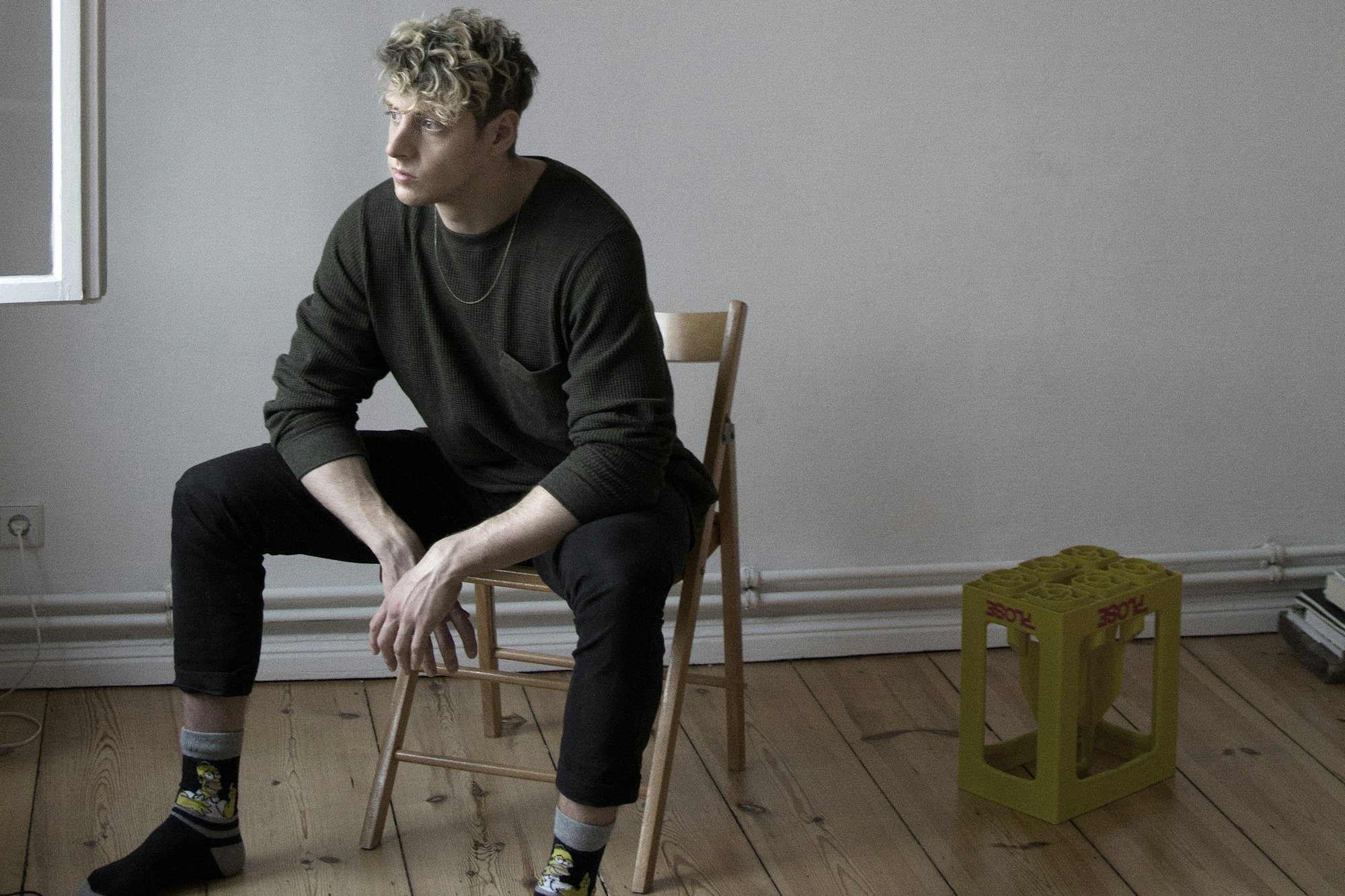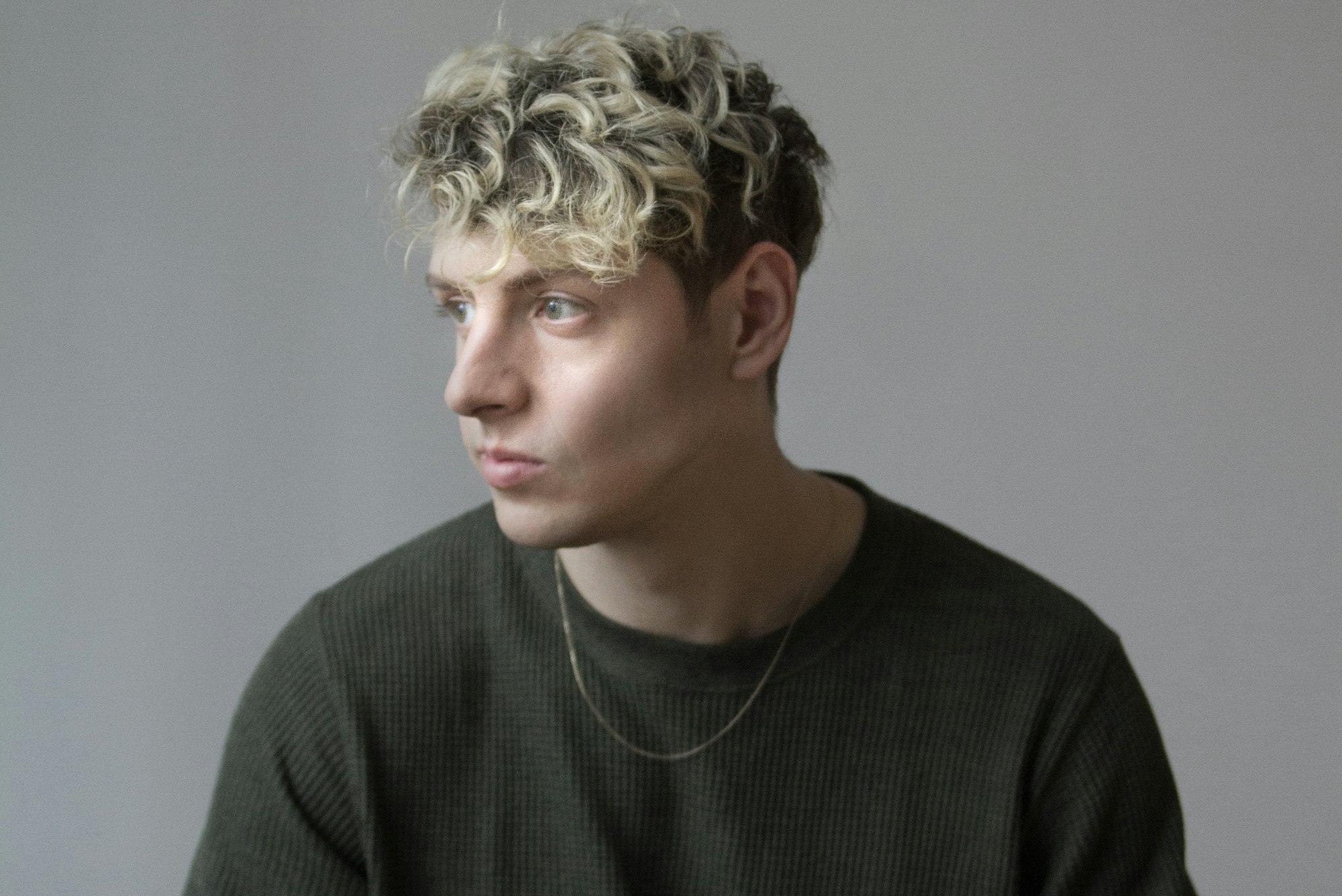Words by Simon Edwards
Industry is HBO’s new drama series following a group of graduates competing for positions at a high-flying bank in London. The young characters are driven by their youth, ambition, and desire for success. Their sense of euphoria and wonder is quickly turned upside down by the pressure and stress thrust upon them by their new environment.
Nathan Micay understands what these characters are going through. Under his original moniker, Bwana, the Toronto-raised producer was thrown into the bubbling UK bass scene with very little knowledge of club culture. After a violent mishap derailed him for almost a year, he made his new home in Berlin. He returned to music with a retooled sound, a new alias, and a greater understanding of electronic music’s deep-rooted history.
Micay is the creator of Industry’s soundtrack and a relative newcomer to the scoring scene. He is much more at home behind the decks or behind his laptop, rather than behind the wheel of a major television soundtrack. But much like the characters in Industry, he had to adapt to a whole new world – and quickly.
We caught up with Micay to talk about his progression from clubland to composer, the challenges he faced, and how his electronic background has kitted him out with some clever composition techniques.

Let’s start at the beginning. How were you first introduced to music?
My mum is a high school music teacher. From a very young age, she got me into instrumentation. I played the piano growing up, and my dad is a huge jazz fanatic. When I went into grade five, the Toronto district school board had a program for getting kids into strings, so I started playing the viola. I played the viola from grade five through to grade 11.
My first steps into the world of production were making four-track recordings with GarageBand on my old school computer.
How did these four-track recordings develop into your electronic productions?
During university, I got really into early dubstep – stuff like Digital Mystikx and Loefah. I really liked that and the deeper sides of jungle and drum and bass. Around 2011, I wanted to try and replicate the music I loved, so I downloaded a trial version of Ableton.
When I was recreating the early dubstep stuff, I was trying to learn synthesis and all this crazy drum programming, but my mind doesn’t work like that. I still to this day have trouble with it. I was really struggling – I couldn’t figure it out. But then I started listening to artists like James Blake, Mount Kimbie, and Jacques Greene – and suddenly, it really made sense to me. It was all based around chords I knew from my piano and viola background.
Every Sunday I would watch a YouTube video and try to learn a new production technique, and then I’d make a new song using that technique. By the ninth month of using Ableton, I had my first two EPs ready to go.
Scoring has always been my main goal out of all this. I love club culture, I love DJing, but I enjoy living a healthy life.
With such a successful DJ and production career, why move into scoring?
I have been very quiet about it, but I’ve been scoring for the past few years. I’ve already done a feature film and a bunch of shorts. Scoring has always been my main goal out of all this. I love club culture, I love DJing, but I also had begun to feel burnt out from the late nights and relentless travel. Last year, I realised that I needed to focus on scoring.
All the scoring stuff I’ve done in the past is with a friend of mine called Alex Ordanis. He’s an Oscar-nominated producer. He’s my age and a friend from Toronto. He made a feature film called, The Definites. That was my first experience with professional scoring.
How did you go from being an indie composer to working with HBO?
I’m very lucky to have been releasing music for the last few years with LuckyMe – who are a partner label to Warp. I’ve been telling Dominic, one of the co-owners of the label, for many years that scoring is what I want to do. So at the end of 2018, Dominic asked me to put together a reel of some of the best scenes I’d worked on. I didn’t think anything would come of it. I didn’t think you could get into scoring from just being an artist in your own right. Well, I did, but I knew the chances were slim. Suddenly, a year later, I got the call for a meeting with HBO.
That must have been an amazing feeling. What kind of score did you imagine for Industry?
At my initial meeting in London, HBO had already sent me a few episodes to watch. They asked me what kind of sound I envisioned for the scenes, and I came back with Tangerine Dream, Risky Business. That soundtrack has this young naivety to it – but also a sense of glamour. It turned out that they had the same thing in mind: some of the temp tracks in one of the episodes were actually from Risky Business. Apparently, songs from my album Blue Spring were also used as temp tracks. Mickey and Konrad, the two showrunners on Industry, loved the sound from that album but wanted an updated version.
As the score developed it began to move into a similar sound-world as some of my albums, which are in part inspired by Vangelis – not at all Blade Runner as much as the organic sound of Chariots of Fire.
As an artist, you’re known for having quite a stripped-back, minimal setup. Did this change after working on such a huge project?
I had been working with the same laptop since 2015, and very quickly I realised that it just wasn’t powerful enough for this project. If I put a video file into Ableton it would crash. It was really tough to do my initial drafts for HBO. So I upgraded to a beast of an iMac. That was a huge thing for me because it opened me up to the world of plugins. Until this point, I had one VST for the past four years – Diva, by u-he. Now I had all this power, I wanted to see what VSTs were out there. At first, I was very less-is-more – I’ll just pick one or two. Then it quickly descended into, let’s get everything!
In the end, I only used a few, but the plugins I did use were huge for me.

Which VSTs did you experiment with for the soundtrack?
I still used Diva because I know it like the back of my hand. Diva with a classic Ableton arpeggiator, in my opinion, you can’t beat it. People often overlook the plugins within Ableton, but I think they’re great.
I also discovered these plugins called Cycles and Auras by Slate + Ash. The Auras plugin is made to be used with a Roli Seaboard. I didn’t have a Seaboard, but I still bought it. I think I got to use it in a more unique way because I didn’t have one.
I also used Straylight by Native Instruments a lot on this soundtrack. It’s so cool for creating eerie textures – and there’s a lot of that all over this soundtrack. From Spitfire, I used London Contemporary Orchestra Strings and Ólafur Arnalds Evolutions. They are both dynamite for textures.
I didn’t even know what a string library was before this project. It was really fun for me to try and take an electronic music approach to string libraries: distorting, crunching, reversing, and warping them. Going forward, I’m going to be all over string libraries.
I didn’t even know what a string library was before this project. It was really fun for me to try and take an electronic music approach to string libraries.
Are all of the strings on the soundtrack from sample libraries?
I also had an entire collection of samples I recorded for my album The World I’m Going to Hell For – about 2GBs of string samples I recorded myself at home with my viola and my brother’s cello.
Originally, I wanted to use live strings, but as the pandemic happened, the idea of trying to do it over Zoom with a very tight schedule stressed me out.
As a newcomer to string libraries, how did you like using them?
I found that if you just use a string library and play it like you would a synthesiser, the sound is quite dull. The trick is to take the string library and layer it on four or five channels. The first channel would be a down bow of a legato, the second one a sul tasto, and the third one might be a heavy vibrato. You have to be clever to make samples sound as real as you can.
Were there any other tips or tricks you learned working on this project?
I had this whole vision of creating a soundtrack with very minimal drums. I wanted it to be as big and grandiose as possible – but with no drums.
When you’re creating a score with no drums, what are you going to fill it with? Delays. I used delays on everything. Anytime anything builds, it’s just delays on top of synths and strings. The accumulation of all those effects creates a sense of wooziness.
Putting a delay on a string is quite interesting because it can make some cool textures and make things really flutter. I was able to take a DJ’s approach to building tension using classical instruments. I would take sounds from trance music, like white noise risers, and throw them in, too.
Listening to the soundtrack, it seems that you used the synths and strings to represent different emotions and characters throughout the music. Are there any particular moments that stand out for you?
I was really excited about creating themes for Harper, Clement and Eric. Harper is fresh into the finance world and excited about her new life. Clement is the elder statesman of the office, and Eric is Harper’s boss. When you see Harper and her friend Jasmine in the show, I wanted the synths to give a sense of euphoria; the rush of their excitement. For Clement, it was all strings. I wanted to create a very opulent, regal feel but also steeped in seriousness.
The keyword I was given to describe Eric’s character was earthquake. Whenever he comes on screen all you hear is sub-bass – like you would hear in old dubstep. I wanted the music to reflect this crushing feeling. If you watch the show with a good sound system, it’s gonna go boom!
What was the biggest personal adjustment you had to make during this project?
I now know what it feels like to work towards a goal that isn’t necessarily yours. I’m so used to working alone: I usually send my music to my manager, a couple of friends, and my record label. Now I’m sending music to a music supervisor, a music editor, the producers, the director, and HBO. It goes on forever.
My vision might not be the final vision, and I learned how to be ok with that. They hired me for a job: I have to take what I can do and put it towards their vision, but also in a way that I’m happy with. That was new for me.

Now that Industry is out on our screens, what is next?
Now that I’m in this world, it’s definitely the way forward for me. I was already reaching a point of exhaustionfrom all the touring as a DJ at the end of last year. DJing and producing has been a great ride and a great experience. I've been incredibly fortunate and I’ll continue to do it, but now that I’m in scoring, I’m really going to pursue it.
I’ll still write my artist albums because I love doing them. I’ll also keep working on my reissue label; it’s a label for really obscure dance music. It’s a great way to feel part of the community, even though the clubs are closed. All the money from that goes to a charity based in Berlin called Aequa. Hopefully, more scoring gigs will come up when things open up again, but for the moment, it’s hard to say.
Press images by Karina Golinda
